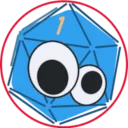This week, I'm trying a slightly different take on the kind of deck I wrote about last week. That deck was designed to inflict damage by making everyone draw. It's a tall order to defeat three opponents that way, so I've added a few cheeky tweaks with alternate win conditions since. However, my main focus is on this less-generous mirror image of Nekusar, the Mindrazer: Queza, Augur of Agonies.
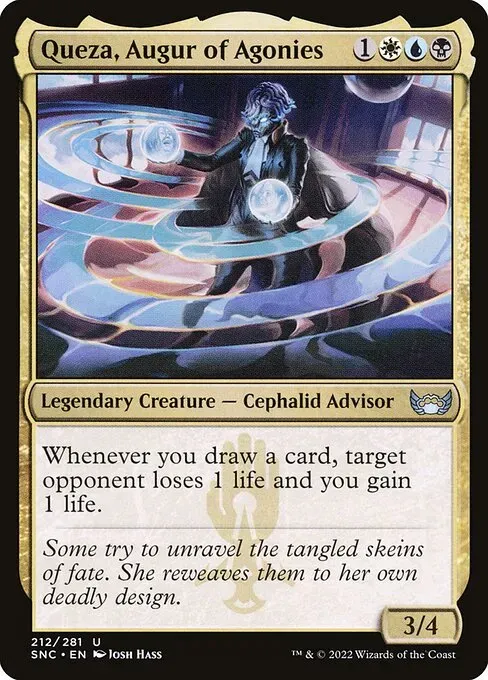
Introduction
Nekusar was blue, black, and red. This combines themes of control and aggression. Yes, when facing him, you could bleed out those precious life points by drawing cards, but you had a chance to draw into your own deck and find answers.
Queza is much more selfish. This legendary cephalid octopus (a rules errata consolidated all cephalids into the octopus creature type) wants all the card advantage to itself. As a downside, it doesn't ping every opponent at the table. I have to choose my enemy. This is a mind game, a game of politics, and a game of choosing my actions carefully. Queza is also white, blue, and black. There is still blue control and that subversive swampy menace seen in Nekusar, but the white adds options for more subtle defensive cards and new win conditions instead of red's pure violence. You can see the entire deck list on Moxfield.
I also decided to set an arbitrary budget for this deck, even though it's built on cards I already own. This won't have the expensive control combos that lock down the table. This needs to be cheap, but able to do many things at once. Queza helps win, but isn't the win condition. The real question, then, is what does win the game?

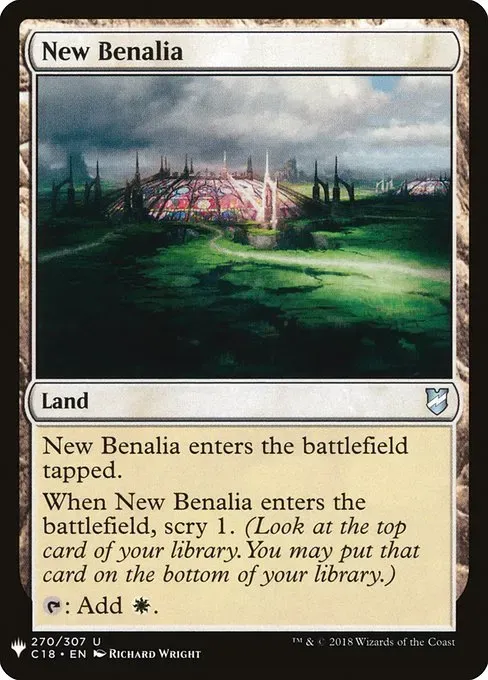
I may not have mentioned this before, but 3-color decks are not my strongest area of understanding Magic: The Gathering synergy. The foundation for single-color decks are simple. A mana base will be mostly basic lands in your color, a few utility lands, and some artifacts or creatures that tap for extra mana. New Benalia (pictured) is an example of a white utility land which enters tapped, but lets me peek at the top card of my draw pile and then choose whether to leave it there, or slide it to the bottom in hope of getting something better. Sometimes the free scry is more useful than immediate access to one white mana.
In a two-color deck, those basic lands are spit between two colors, and you probably add various multi-color lands. There are several options, some costing pennies, and others hundreds of dollars. Guess which ones I don't own. Fortunately, several sets with less-desired but no-less-useful dual lands have been released over the years. And of course a new color means a few more utility land options in that color, too.
A thee-color deck ramps up the complexity of mana base selection even more. Not only is there a third color of basic and utility lands, but there are also three different sets of dual-color lands to consider, and even a few tri-color lands nowadays. In the higher-budget scene, it's not unlikely to see three-color decks with only one of each basic land! This is risky, however, because there are also a lot of cards that adversely affect non-basic lands en masse, so there are good reasons to stick to the basics besides the absurd prices of good dual lands alone.

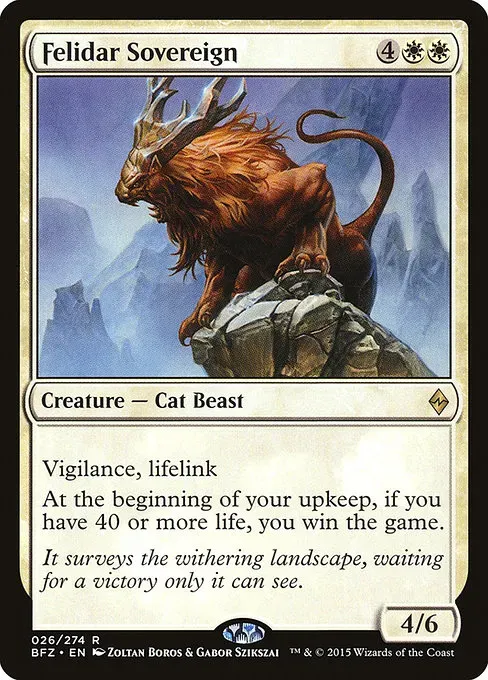
White
Felidar Sovereign (pictured) epitomizes white's defensive nature with the vigilance and lifelink keywords, and adds an alternate win condition for maintaining my starting life total. This card is harder to use in 60-card formats where life totals start at the standard 20, but Commander already starts at 40.
White also includes damage evasion with cards like Dazzling Reflection, which also feeds into the life gain subtheme of this deck as a whole; and Archangel's Light, which helps protect me from decking myself out of the game or gives me an emergency response to someone else's devastating damage.
Finally, white is a good color for controlling game tempo. Sphere of Safety and Ghostly Prisonmake it harder for my opponents to attack me, and Consulate Crackdown places all the artifacts my opponents control out of the game until they find a way to destroy the enchantment.
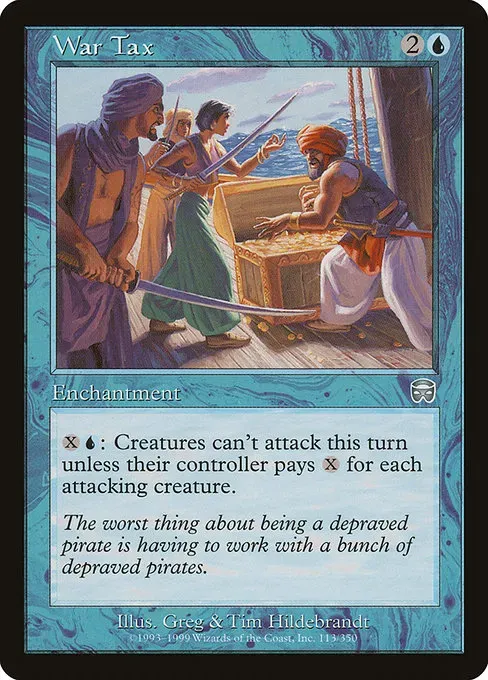
Blue
War Tax (pictured) is one of the earliest tax effect cards I know of, and I added it here. You can already see how blue adds even more to the control aspect of white's tempo disruption.
Blustersquall can answer one threat cheaply, or everything my opponents control for its overload cost. Consuming Tide is a board wipe to equalize the game if someone is creating too much nonsense. Similarly, Whelming Wave sweeps away everything that isn't an octopus ("Thanks, rules errata!"-Queza), kraken, serpent, or leviathan.
Speaking of leviathans, Stormtide Leviathan makes all lands in play Islands in addition to their other types, and then makes itself unblockable whenever I attack anyone who controls an island. No one expects an 8/8 unblockable monster!
Finally, blue is home to lots of cards that allow me to draw, which not only helps me stay ahead of the game, but also has a chance to trigger Queza's pings of damage and gain me more life.
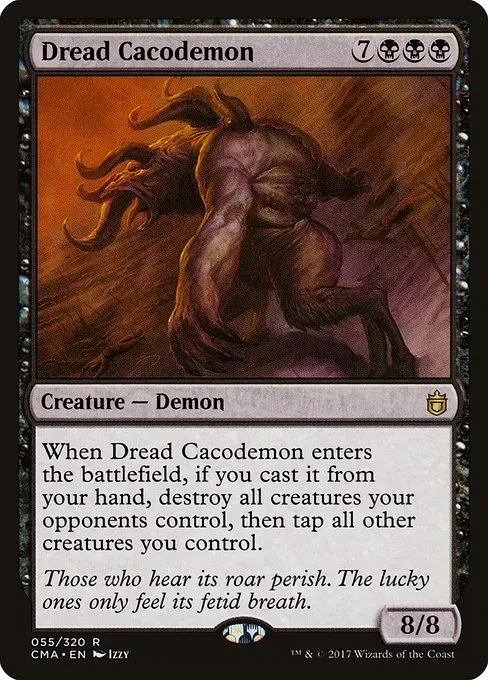
Black
This color doesn't play a huge role in this deck on its own, but it is present. Most cards with black are multi-color spells. However, the most mana-intensive card in the deck is Dread Cacodemon (pictured), another stompy 8/8 who brings along a board wipe for the astronomical cost of seven generic mana plus three black mana for a total converted mana cost (CMC) of ten.
Triskaidekaphobia is just a fun pet card I like to include when I can spare a slot in a deck. This is a fun casual budget deck, not an optimized cut-throat deck. Like the Felidar Sovereign mentioned above, opponents can see this coming long before it does its thing, and they have time to respond, but it can end someone's game, so it's also a way to bait out removal spells.
Bloodline Culling is a dual-purpose removal spell that can handle larger creatures or wipe out hordes of small creatures.
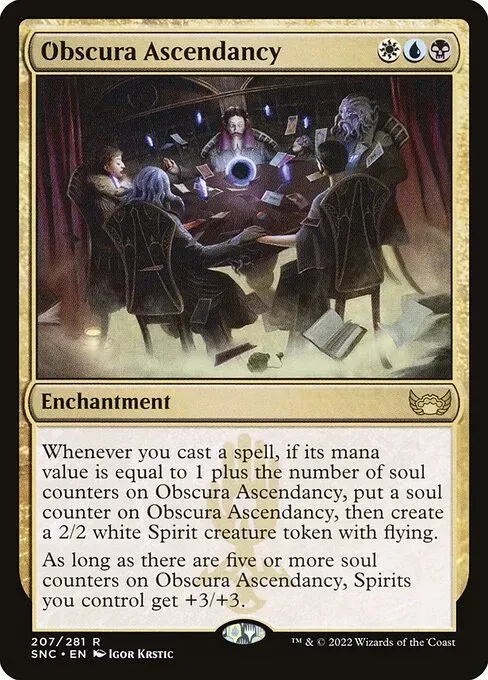
Colorless and Multi-Color
One of the fun parts of adding more colors to a deck is seeing all the different combinations of cards with multi-color casting costs. Obscura Ascendancy requires one each of the three colors of mana in this deck, and like the commander, it leans into a bit of all three colors for what it does. Death, synergy, evasion, and control all play a role here.
There are a lot of other spells which ask for two different colors of mana, so take a look at the deck list and see what you think.
Rounding out the deck is a suite of artifacts to help generate mana, draw cards, give me an unlimited hand size, and generally enhance my ability to reach those win conditions. These are almost all cast with generic mana, so they don't need to worry about what lands I have in play. I should note that there is no Sol Ring in this deck, but I don't think that's too great a loss based on what I do have here instead.

Conclusion
I still haven't had a chance to play a game with this deck, but I am pleased with its potential based on what I have played before and my modest experience with commander as a whole. The mana curve is quite playable with more than half the spell cards CMC 3 or less. I think this deck is at least on par with the preconstructed decks Wizards of the Coast is publishing nowadays. It has its gimmick, it has alternate win conditions, it has answers to what other players do, and it avoids most of the unfair feelings mill, discard, and wheels generate. What do you think, though?
